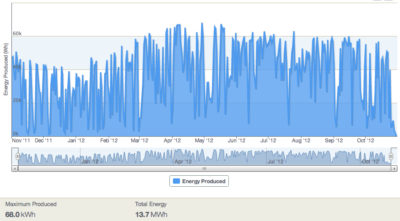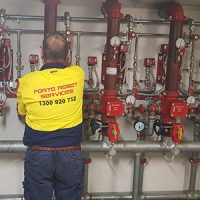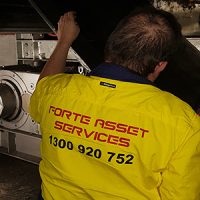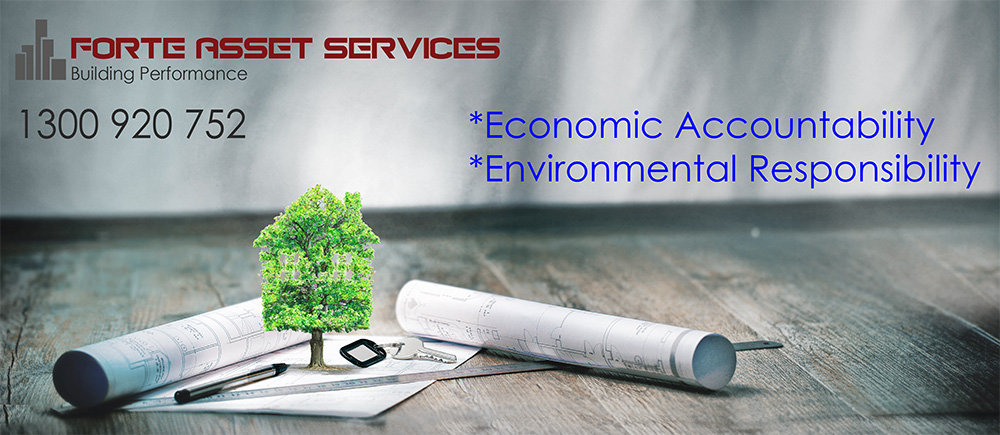Why Maintain Your Fire Extinguishers?
Why Maintain Your Fire Extinguishers? Fire Extinguishers are often the first line of defence in an event. They are portable, light…

Technology is the basis for everything we do, including facility services, energy management and building operations. What this means, for our clients, is we manage and improve the performance of the building a single system, including energy, hence
energy management faqs
Below we have an accordion style listing of some of the FAQs which come our way regarding energy management. if there’s something you’d like to add or if you have a Question, please feel free to let us know.

Energy and Environmental Management with the conservation of electrical power and gas consumption

Energy Management
Why Maintain Your Fire Extinguishers? Fire Extinguishers are often the first line of defence in an event. They are portable, light…

Operations Strategy in Commercial Buildings One Operations Strategy in Commercial Buildings that will make your day better in Facility Management This…
A Fire & HVAC Maintenance Short Cut to Avoid An uncomfortable conversation. A little bit about us We look after buildings,…

Building Recommissioning Improving Building Overall Performance.When do we need to perform building recommissioning?What will it achieve?What is the cost?How thorough should…

Negating the “Management by Crisis” Scenario! Mitagating Reactive Management with Technology, that is, Intelligent Buildings. Typically, Management by Crisis or Reactive…

Do you keep an Asset Register Database for your building? Creating and Maintaining an Asset register is not always on the…
EMS is an acronym for Energy management System. Most BMS (Building Management Systems) can deliver this functionality without a great deal of cost. Often there are programming opportunities in built into the existing BMS which allow for the additional use of the system for energy management.
Have you ever driven a car and the dashboard has failed, the car is still drivable, but its unnerving and uncomfortable situation to be in. How do you know what is going on. The same for your building facility, the exposure of harm is to your “bottom line” in the balance sheet. You can only manage energy, if you can see where it is being used or for that matter, wasted. So how much should you monitor? we’ll talk about that further down this page, but its not as much as you might think
An EMS is a tool, it provides that data for you to make better choices to reduce energy consumption without effecting how the building operates, to any great extent.
An Energy Audit is recommended with or without an EMS. We would recommend, a level 1 energy Audit before the implementation of an EMS as it sets a control point, a bench mark from where to measure strategies and results. The level 1 Energy Audit will likely offer strategies, which will reduce you energy bill immediately. These strategies will vary in cost for their implementation, from nil to several thousand. the implementation of the strategy is up to you, but your eyes are now open to making better energy choices for future equipment.
Definitely, there is a always an opportunity to improve, the improvement will pay for audit, then the savings are yours.
Start with an Energy Audit Level 1, then move forward after that. Energy Audits Levels 2 and 3 provide more information however this is gathered over a time period. by starting at a Level 1 Audit then moving to Level 2 or 3 after the strategies of the level 1 have been implemented then the level 2 and 3 audits will offer greater benefit and greater depth.
The supply authority has their energy meter at the start of the installation only, they don’t go any further,because, quite frankly, they don’t need to to give you a bill of energy consumption. The EMS goes deeper to more specifics, for example, plant rooms, mechanical services, tenants distribution boards, Lighting panels, security rooms, server rooms, data centre and more. The system is customized with the the greatest concerns of the client as the greatest priority for measurement and control.
Regardless of brand, the best EMS is the system which considers the relevant and heaviest energy consuming equipment in the facility and provides visibility into the energy consumption of this equipment.
We can talk about brands and types for hours, the most important target is results that are constructive to making energy efficient choices which will return funds to the balance sheet.
There is a plethora of types and brands of energy meters which suite the various situations which surface in proving an EMS. You can spend $10,000 on a single meter for a switch board or $1200 for essentially the same device. The Brand is the same, what differs is the flexibility as to accessing and using the data
Keep it Open Protocol: This is the communications type which the metering devices within the EMS use. Open protocols such as Modbus, Bacnet and Lon Talk have been in existence for decades now and are still being supported by vendors and equipment manufacturers. New technology is constantly coming on to the market, however manufacturers install the open protocol communications chips to ensure their product sells..
Look out for “proprietary open”, this is where a single vendor offers an open protocol devices but adds another “bit” to ensure it can only communicate with devices from the same vendor, yet its sold as open protocol.
Yes, there are some conditions, but nearly always there is a way to use an existing or new BMS and incorporate an EMS as part of the specification. That said, some facility owners prefer a third party as it keeps the existing BMS vendor on their toes and it provides independent verification of the operation and strategies of the BMS.
Generally, the EMS will have a positive effect on the rating for two reasons. The first, is the metering may offer the opportunity to isolate zones in the building which may not need to be included in the total energy consumption of the building, for example a car parks. There are conditions and the NABERS validation protocols should be consulted for clarification upon your particular situation.
Secondly, the EMS will provide insights into the energy use within your facility, using this data to make better choices in implementing conservation strategies will have a positive effect upon the NABERS rating as the facilities overall energy use reduces.
Possibly, yes, the Electrical energy meter typically connects to three current transformers which provide a 0-20millamp (or 4-20milliamp) signal back to the electrical energy meter. In old switchboards these current (AMP) meters were installed to drive an analogue amp meter display in the front of the switchboard. The Meter installer will need to ensure ratios and correct parameters are present to ensure correct and accurate operation of the new electrical energy meter which forms part of the EMS.
Nearly always, the BMS that can’t is likely obsolete or a “bit if a toy”. If it cant do energy metering, without a major upgrade, consider total replacement. Energy Meters use open protocols and can talk to most BMS without issues. A web server might be needed, but this wont be a major cost and there are additional functions and benefits which will be obtained form the web server.
